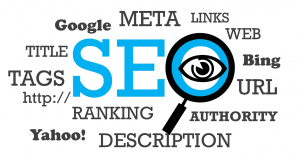Are You Hitting the Right Digital Marketing Targets?

In this post, we’ll be taking a look at a couple of ways to ensure that you’re not wasting your marketing budget by aiming at the wrong targets. We’ll walk you through a couple of simple steps that will help you ensure that your marketing budget is used in the most cost-effective way possible.
Understanding your audience
One of the first things to ask yourself is if you understand your audience or not. A lot of businesses will create an ideal customer profile and try to target them with their products, services and advertisements. However, there’s always a small chance that this ideal customer doesn’t actually exist.
Customer profiles can be used to help you start your business and develop products, but you ultimately need to listen to customer feedback and use real data to determine where you need to take your business. As such, make sure you listen to your audience and determine the type of customer that your products and services actually appeal to instead of trying to chase a fictional customer that might not even exist.
Make use of demographic targeting
Once you understand the type of customer you should be aiming for, it’s time to use targeted marketing to aim your marketing at the right people. Most social media services have some kind of targeted marketing settings where you can choose the demographics who your advertising will appear to. Platforms such as Facebook offer a fantastic number of demographic targeting settings to tweak in order to raise the quality of your leads.
There are also demand-side platforms that can help you save time and money when advertising your products and services. A DSP allows you to quickly set up a campaign with granular demographic targeting that fits your needs, and then the DSP does all the work to figure out how the ads should run. It saves you from having to buy digital ad space from publishers and it offers more predictable pricing.
Find the right platforms and channels to reach your audience
One of the most popular but misunderstood ways to reach your audience is to use social media advertising. By breaking into the right communities, you can go straight to your audience and start improving the quality of your leads. However, it’s important that you try to reach them on the right platforms and channels if you want to get the most out of your budget.
Demographic targeting is great, but you also need to think about the platforms you’re targeting them on. For instance, targeting seniors on a platform such as Twitter might not be as effective as traditional media such as newspapers, magazines and even TV. However, aiming your fashion-oriented products at users on Instagram is far more likely to work given the types of people that use the platform. In short, make sure you’re investing your advertising budget wisely by aiming at the right audiences.

Reputation is everything when it comes to today’s business landscape. We live in a connected world where everyone has a say in anything, and that includes your business’s reputation. Annoy one customer and they could spark a chain of boycotting if they have a sizable following on social media. Make one small mistake and your business’s reputation could get dragged through the mud by an angry and ill-informed mob. This is just the world we live in, hence why it’s vital that you need to focus on your company’s reputation if you want to reach your target audience.
Here are a couple of suggestions for improving your reputation to ensure your company reaches the right people:
- Be transparent when it comes to issues that could cause trouble for your reputation
- Don’t make promises that you can’t keep and ensure that you stick to them if you’ve made any–there’s nothing worse for a company’s reputation than false promises
- If you’re facing a problem with your business and your audience, make sure you act quickly instead of letting the problem stew and get progressively worse by staying quiet
- Always respond to criticism and questions from your audience if possible
- Be a caring and ethical employer to show that your business can be trusted
- Work with your audience and its communities to show that you care about their opinions
It can be difficult to maintain a good reputation for your business. However, if you’re an honest and trustworthy company that doesn’t engage in shady dealings, you’ll find that this can be surprisingly easy.
Speak the same language as your audience
Whether it’s jargon, idioms or technical terms, make sure that you’re speaking the same language as your audience. This will greatly improve your chances of reaching out to them on social media and will greatly improve customer relationships.
This can be made much easier if you have a community manager available to assist you. A dedicated role that is focused on communicating with your audience means that you’ll have a much easier time listening to them and understanding them. You can respond to their questions, take on their feedback and create a much better relationship with your audience.
It can be difficult to hit the right marketing targets especially if you haven’t already defined them yet. Having the right business strategy can greatly improve your chances of targeting the right audience and growing your company. With a limited marketing budget, it’s important that not a single penny goes to waste. With the correct marketing strategies and aiming at the right audiences, it can be much easier than you’d think.




